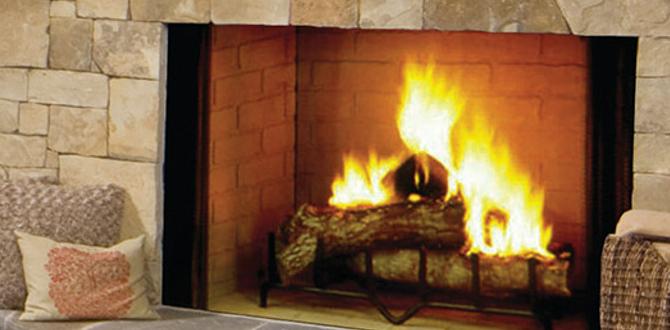Quick Summary
Choosing between pneumatic and battery nailers depends on your project needs. Pneumatic nailers offer unmatched power and speed for heavy-duty tasks, while battery nailers provide ultimate portability and convenience for smaller jobs. Consider power, portability, cost, and project type to make the best choice.
Table of Contents
How to Choose Between Pneumatic and Battery Nailers: The Essential Guide for DIYers
Picking the right nailer can feel like a puzzle, especially when you’re just starting out. You want to get that trim perfectly in place or build that deck without a hitch. The biggest hurdle often comes down to power: should you go with the classic air-powered (pneumatic) nailer or the newer, cordless battery-powered option? It’s a common question that can leave even experienced DIYers scratching their heads. But don’t worry, that’s exactly why we’re here! Think of me as your guide, Jack Shaffer from Nailerguy, ready to break down the differences in simple terms. We’ll walk through everything you need to know, step-by-step, so you can feel confident making the best choice for your next project. Let’s get started!
Choosing between pneumatic and battery nailers might seem overwhelming, but once you understand their core strengths and weaknesses, it becomes much clearer. Both types have their place in a DIYer’s toolkit, and knowing which one fits your needs will save you time, frustration, and maybe even some money. Let’s dive into what makes each type tick.
Understanding the Two Main Nailer Types
At their heart, both pneumatic and battery nailers drive nails into materials. The key difference lies in how they get the power to do that.
Pneumatic Nailers: The Powerhouses
Pneumatic nailers, also known as air nailers, rely on compressed air to drive nails. This air is stored in a tank on an air compressor and sent through a hose to the nailer. They’ve been the go-to for professionals and serious hobbyists for decades because of their raw power and consistent performance.
How they work: You connect the nailer to an air compressor via a hose. When you pull the trigger, a burst of compressed air pushes a piston, which in turn drives a nail. The compressor replenishes the air pressure as needed.
Battery-Powered Nailers: The Freedom Machines
Battery-powered nailers, often called cordless or cordless electric nailers, use a rechargeable lithium-ion battery to power a motor. This motor then drives the nail. They offer incredible freedom because they don’t need an air compressor or a power cord, making them super convenient for various tasks.
How they work: A motor inside the nailer uses power from the battery to either spin a flywheel that impacts the nail or use a small gas cartridge (in some models) with an electric spark to ignite and drive the nail. The simplicity is one of their biggest draws.
Key Factors to Consider When Choosing
To make the best decision, let’s break down the most important factors you’ll want to think about for your DIY projects.
1. Power and Performance
This is often the first thing people consider. How much force does the nailer deliver, and can it handle the materials you’ll be working with?
- Pneumatic Nailers: Generally, pneumatic nailers are the undisputed champions when it comes to sheer power. That burst of compressed air can drive larger nails into harder woods with ease, making them ideal for structural work, framing, and demanding demolition tasks. They also tend to offer a more consistent depth of drive, meaning your nails will sink to the same depth every time, which is crucial for a professional finish.
- Battery-Powered Nailers: Battery nailers have made huge strides in power. Modern models can handle many tasks that used to require pneumatic tools. However, for consistently driving very large nails (like 3-inch framing nails) into dense hardwoods, they might occasionally struggle or take a second longer. For most common DIY tasks like trim, crown molding, and smaller framing projects, they are more than capable.
2. Portability and Convenience
This is where battery nailers truly shine. Think about where and how you’ll be using your nailer.
- Pneumatic Nailers: Portability with a pneumatic setup is limited. You need the air compressor, which can be bulky and heavy, and a long air hose that can get tangled or restrict your movement. Setting up can take a bit longer. You’re tethered to the compressor.
- Battery-Powered Nailers: The freedom is incredible! No hoses, no compressors, just pick it up and go. This makes them perfect for working in tight spaces, high-up locations (like attics or on ladders), or when you’re moving around a large job site. The setup time is minimal – pop in a charged battery, and you’re ready.
3. Cost: Initial Investment and Running Costs
Let’s talk about the price tag. It’s not just about the nailer itself.
- Pneumatic Nailers: The nailer tool itself can sometimes be less expensive upfront than a comparable battery-powered model. However, you must factor in the cost of an air compressor, which can be a significant investment, often costing as much as or more than the nailer. You also need to buy air hoses, fittings, and possibly air filters and oil. Running costs are relatively low once you have the compressor, mainly just electricity to power it.
- Battery-Powered Nailers: The initial cost for a battery nailer can be higher, especially if you need to buy the battery and charger separately. However, you save on the compressor and hoses. If you already own tools from the same battery system (e.g., if you have a DeWalt drill and battery), you can often just buy the bare tool (without battery and charger), which can significantly reduce the cost. Running costs are related to electricity for charging batteries.
4. Types of Projects
Consider what you’ll be building. Different projects have different nailer requirements.
- For Heavy-Duty Projects (Framing, Decking, Sheathing): Pneumatic nailers are often the preferred choice due to their consistent power and ability to drive large nails repeatedly without issue. However, higher-end battery framing nailers are now very capable for these tasks.
- For Finer Work (Trim, Crown Molding, Baseboards, Picture Frames): Both types can excel here. Battery nailers offer great convenience for working around a house, and their often-adjustable depth settings are perfect for sinking nails just below the surface without damaging the wood. Pneumatic finish nailers are also excellent, providing a very consistent drive.
- For Occasional DIY and Quick Fixes: A battery nailer is fantastic for those times you need to hang a shelf, fix a fence picket, or do a small craft project. The portability and ease of use are big advantages.
5. Noise and Vibration
This is a factor that greatly impacts your working experience, especially for extended use or in residential areas.
- Pneumatic Nailers: These tools, and the compressors that power them, can be quite loud. The compressed air exhaust can also create a noticeable “thump” with each nail driven. You’ll likely want ear protection.
- Battery-Powered Nailers: While they still make noise, battery nailers are generally quieter than their pneumatic counterparts, especially the compressor. The vibration might feel a bit different, but many find them more comfortable for prolonged use, and ear protection is still recommended, but perhaps less critical for very short bursts.
6. Maintenance
All tools require some care, but the types of maintenance differ.
- Pneumatic Nailers: Typically require oiling the internal mechanisms (if it’s an oil-lubricated model), ensuring the hose and fittings are secure, and draining moisture from the compressor tank. The compressor itself also needs maintenance.
- Battery-Powered Nailers: Maintenance is generally simpler. Keep the tool clean, ensure the battery contacts are clean, and store batteries properly. The battery needs to be recharged, and eventually replaced, which is a consumable cost.
Pneumatic vs. Battery Nailer Comparison Table
To help visualize the differences, here’s a handy comparison table:
| Feature | Pneumatic Nailer | Battery-Powered Nailer |
|---|---|---|
| Power Output | Very High, Consistent | Good to Very Good (improving) |
| Portability | Limited (needs compressor & hose) | Excellent (cordless, self-contained) |
| Initial Cost | Nailer often lower, but compressor is a significant extra cost. | Nailer often higher, but no compressor cost. Can be cheaper if you own batteries. |
| Running Cost | Low (electricity for compressor) | Moderate (electricity for charging batteries, battery replacement over time) |
| Setup Time | Slower (compressor, hose, connections) | Fast (pop in battery, go) |
| Best For | Heavy framing, decking, high-volume work, professional use. | Trim, finish work, DIY projects, renovating, working in tight/remote spaces. |
| Noise Level | High (tool & compressor) | Moderate (tool only) |
| Maintenance | Oil, air filters, compressor tank draining. | Battery charging, cleaning tool. |
When Pneumatic Might Be Your Best Bet
You should lean towards pneumatic if:
- You’re building a new house or doing major structural work: Framing nailers and other heavy-duty pneumatic tools are designed for this. They have the power and endurance for driving thousands of nails into tough materials day in and day out.
- You already own an air compressor: If you’ve invested in a compressor for other tools (like impact wrenches, spray guns, or even other nailers), adding a pneumatic nailer is a cost-effective way to get a powerful tool.
- Budget is a primary concern AND you need maximum power: While the compressor adds cost, individual pneumatic nailers (especially for framing) can sometimes be found at a lower price point than their battery equivalents with similar power.
- You need absolute, unwavering power and speed for high-volume tasks: For repetitive tasks where speed and consistent nail driving are paramount, pneumatic still holds a slight edge for many users.
For more detailed information on air compressors and their role in woodworking, you can check out resources from organizations like the Occupational Safety and Health Administration (OSHA), which provides safety standards for compressed air equipment.
When Battery-Powered Nailers Rule
A battery-powered nailer is likely your winner if:
- Ultimate portability is key: If you’re working on a house renovation, moving between rooms, or need to work on a ladder, the freedom from cords and compressors is invaluable.
- You’re doing trim, molding, or finish work: Most modern battery finish and brad nailers are excellent for these applications. They offer great precision for sinking nails exactly where you want them.
- You want quick setup and easy cleanup: No hoses to untangle, no compressors to roll out. Just grab the tool and go. This is perfect for quick repairs around the house.
- You prioritize a quieter working environment (personally or for neighbors): Battery tools are generally less noisy than pneumatic setups.
- You’re already invested in a specific battery platform: If you have DeWalt, Milwaukee, Ryobi, or another brand’s batteries and chargers, buying a bare tool (tool only) can make a battery nailer very cost-competitive and convenient.
The convenience of battery-powered tools is a big reason for their popularity. For an overview of battery technologies, you might find information from consumer electronics associations or battery manufacturers insightful, though for DIY use, focusing on tool-specific performance is more important.
Types of Nailers You’ll Encounter (and how they fit)
Both pneumatic and battery technologies come in various nailer types. Understanding these will further help you choose:
1. Framing Nailers
These are your heavy hitters, designed for rough construction like building walls, decks, and subfloors. They drive long, thick nails (often 2-3.5 inches). Framing nailers are available in both pneumatic and battery versions. Pneumatic is still widely considered the standard for maximum power and speed, but powerful battery framing nailers are increasingly popular.
2. Roofing Nailers
Specialized for attaching shingles and underlayment to roofs. They have a distinctive magazine and a mechanism to drive broad, short nails. Mostly pneumatic, but some cordless options exist. Given the specific task, portability might be less of a concern than power and speed.
3. Finish Nailers
Used for installing trim, baseboards, chair rails, and crown molding. They drive slimmer nails (like 15-gauge or 16-gauge) that leave smaller holes, making them easier to conceal. Available in both pneumatic and battery forms, and both perform exceptionally well. Battery finish nailers are especially popular for home renovations.
4. Brad Nailers
Even slimmer than finish nailers (typically 18-gauge). They drive very small nails, perfect for delicate trim, decorative molding, or assembling small wooden items where minimal hole size is critical. Battery brad nailers are incredibly convenient for all sorts of small projects.
5. Pin Nailers
These drive even smaller, headless pins (23-gauge). They are used for the most delicate tasks, like attaching small trim pieces or holding workpieces together temporarily while glue dries. Almost exclusively battery-powered due to their compact nature.
A Note on “Impulse” vs. “Direct Drive” Battery Nailers
It’s worth mentioning that battery nailers can operate differently. Some use a mechanism called “impulse” or “inertia” drive, which is like a rapid-fire impact. Others use “direct drive” which is smoother. Most modern battery nailers employ advanced engineering to deliver consistent power. For DIYers, the key is to read reviews and see how specific models perform for tasks similar to yours.
Making Your Final Decision: A Quick Checklist
Before you click “add to cart” or head to the store, ask yourself these questions:
- What is the primary type of project I’ll be using this for? (e.g., framing, trim, small crafts)
- How often will I be using the nailer? (e.g., daily, weekly, a few times a year)
- What is my budget for the nailer itself, and potentially for accessories like a compressor or extra batteries?
- Do I already own tools that use a specific battery system?
- How important is portability and ease of setup for my typical workspaces?
- Will I be working in noise-sensitive areas or for long durations?
Answering these will quickly point you towards the best option for you. For instance, if you answered “trim work,” “a few times a year,” “already own batteries,” and “portability is key,” a cordless finish or brad nailer is likely your clear winner. If you answered “framing,” “daily,” and “budget is tight but need power,” a pneumatic framing nailer (assuming you can get a compressor) might be the way to go.
For excellent resources on tool safety and best practices, consider the National Safety Council, which offers comprehensive guidance on tool usage and workplace safety that applies to all DIYers, regardless of the tool type.
Frequently Asked Questions (FAQ)
Q1: Can a battery nailer really replace a pneumatic one for all my DIY needs?
For most DIY projects, yes! Modern battery nailers are very powerful and convenient. However, for heavy-duty construction or extremely high-volume framing, a pneumatic nailer might still offer a slight edge in raw power and speed. But for the average homeowner’s projects, a battery nailer is usually more than sufficient.
Q2: What’s the biggest advantage of a pneumatic nailer?
The biggest advantage is typically their raw, consistent power and speed. They are built for demanding tasks and can drive nails all day long without performance degradation, as long as the compressor can keep up. They also tend to have a longer lifespan under heavy professional use.
Q3: What’s the biggest advantage of a battery nailer?
Portability and convenience are the undisputed



